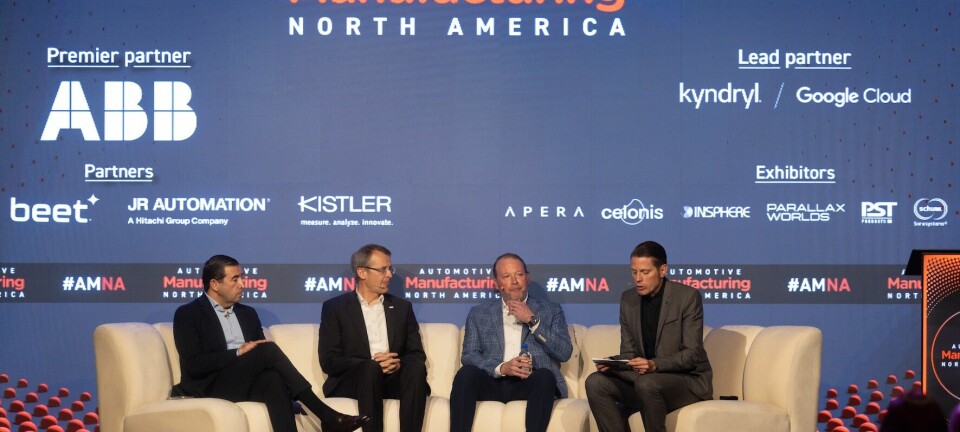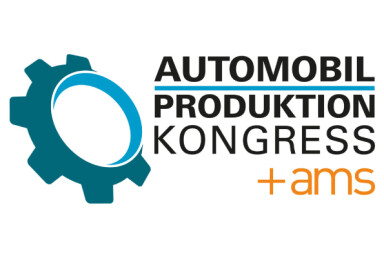Upgrades for US auto factories
New alliances and innovative factory upgrades for US auto industry

GM and Hyundai form a wide-ranging new partnership, and Toyota reinvents its Kentucky plant to pioneer global manufacturing standards
Discussions between vehicle companies about partnerships have been a regular feature of the automotive industry for many years; some discussions last several years, and some agreements can be unwound not long after starting. For example, GM and Honda managed to spend US$5 billion on plans to work together to produce affordable electric vehicles before concluding that they could not make any of their plans work financially. So, when, in September 2024, GM and Hyundai announced they were planning to work together on a range of cars and CVs, on ICE and hybrid powertrains and a range of new clean energy technologies, plus the potential joint sourcing of battery materials and steel, there was some scepticism over whether this plan would actually produce anything of substance.
GM-Hyundai partnership offers real opportunities
However, in March 2025 news emerged that these discussions were going well and were accelerating following the increased tariff regime under President Trump. Despite their significant investment in Georgia and Alabama, Hyundai is reportedly interested in using GM’s US manufacturing network to get around the tariff burden, possibly with CKD operations initially. Reports also suggested that Hyundai would like to use GM’s under-utilised factory in Egypt which Hyundai sees as a growth market.
Reports then went quiet until early August when a new wide-ranging alliance was announced. In the planned arrangement, Hyundai and GM will co-develop five new vehicles for the Americas as a whole, four for Central and South America and one for North America. Hyundai will be the leader on vehicles for Central and South American markets, namely a compact car, SUV and pick-up; in parallel GM will lead development of a mid-size pick-up truck. All these vehicles will be designed to use either ICE or hybrid systems. And finally, Hyundai will lead on the development of a battery-powered van for North America, a segment in which GM is notable for its absence.
Improving plant utilisation
Production locations have not been confirmed, although reports have suggested that Hyundai will expand one of its US factories, and may use its Brazilian factory for the vehicles for Latin America. At the same time, it is worth noting that GM has several factories in North America which could benefit from producing some of these new vehicles to boost their utilisation figures. The Hyundai-developed electric van is expected to be made in Korea initially before shifting to North America; the long-term tariff situation regarding imports from Korea will impact the final decision on this vehicle’s long term production location.
Hyundai and GM will have their own versions of vehicles made through these joint programmes. They will have common platforms, but GM and Hyundai will each develop their own interiors and exteriors. The five-vehicle programme is designed to reach production of 800,000 units per year. The first vehicles for Central and South America are expected to appear in 2028, which is when the battery electric van is expected to be produced in North America. Finally, the programme will also cover component sourcing and associated transport and logistics. For example, Hyundai will supply steel for GM in Korea replacing steel sourced from local supplier Posco and Chinese company Baoshan; in parallel, Hyundai is building a new steel plant in the US, and this is expected to supply GM as well as Hyundai and Kia in the US.
This is the first partnership agreement in which Hyundai has become involved with another major car company since its early days when it licenced the use of old Mitsubishi platforms. GM by contrast has a somewhat chequered history of partnerships, few of which have been long-term successes. The scale of how and where GM and Hyundai plan to work together is wide and extensive, possibly bigger than what was expected. There will likely be many sceptics watching and waiting for the ambitious plans to unwind in view of GM’s historical lack of success in this area.
It also worth noting that Hyundai will continue its own US investment programme alongside the joint projects with GM. It has announced plans to increase investment in the US to US$26 billion between 2025 and 2028. This involves an increase of US$5 billion on top of the US$21 billion investment announced in March this year, reflecting the group's strategic focus on expanding its US market presence. Investments in a new steel mill in Louisiana (which should meet with approval of President Trump given his wish to return traditional manufacturing jobs to the US) and an advanced robotics facility are expected to generate approximately 25,000 new direct jobs in the US over the next four years.
The company [Toyota] has decided to concentrate its US EV production at its Georgetown Kentucky factory, leaving its Indiana factory to make hybrid or ICE models, for now at least
Toyota: transforming manufacturing in its US operations
At home in Japan, Toyota has led the way in transforming vehicle production systems across the world. Now significant changes in its US operations, some of which have been in response to the Trump government’s trade policy, show that the company is willing to use international operations as the lead location for potential company-wide developments.
The company has decided to concentrate its US EV production at its Georgetown Kentucky factory, leaving its Indiana factory to make hybrid or ICE models, for now at least. The first example of this in practice is the relocation of production of a three row EV crossover from Princeton, Indiana to Georgetown. A Subaru sister model will also be made in Georgetown. The Toyota EV to be made in Georgetown will directly replace the ICE-powered Highlander. In its place in Indiana, Toyota will raise production of the still very popular larger model, Grand Highlander.
However, this is far from the only change in Toyota’s US operations. In July 2025 reports emerged that a ten-year programme, costing around US$1.8 billion, known internally as “K-flex”, was complete. This had begun as an experiment but will now involve Line 1 in Georgetown becoming what Toyota regards as the most flexible assembly line, not just within Toyota, but across the world. Time will tell if this transformation lives up to the claims, but it is nothing if not ambitious. The conversion of Line 1 to the new set-up is notable moreover because it took place while the line carried on producing vehicles; no jobs were lost, and production was not interrupted.
In theory, Line 1 at Georgetown can now make any vehicle based on the Toyota TNGA-K platform, i.e. the Camry, RAV4, Highlander, Sienna and EVs which use a skateboard platform and are of the same size as a TNGA-K vehicle. The assembly line is also designed to be powertrain-agnostic, having started work making hybrid Camrys.
Reorientating the assembly line
The way in which vehicles move along the assembly line has also changed and is regarded as key to the line’s flexibility and efficiency. Typically, vehicles move along assembly lines in a linear manner, nose to tail. However, on the reconfigured Line 1 at Georgetown, vehicles are turned 90 degrees and move sideways, or door to door. This change has multiple advantages; workers walk less between stations, the length of the line is reduced, and automation is easier as it only has to work the width of the car, rather than along its length. Also, with the car chassis moving sideways, the carriers doing the heavy lifting are no longer limited by the length of the car; vehicle width does not vary as much vehicle length. Toyota has also designed the set-up so that when the engine and suspension arrive at the marriage station, they can do so simultaneously rather the sequentially.
The line also makes extensive use of autonomous robots which are much smaller than traditional robots and of course than human beings. These robots are only 24 inches square, and 10 inches tall and can work safely in areas outside normal “human walkways” within the assembly hall. Autonomous skillets deliver the finished chassis in the right order to the final assembly line. They can travel as required within the factory and do not require the magnetic tape typically used on the floor to guide AGVs. Similar machines deliver drivetrain components and will also deliver battery packs and EV drive units to the correct place on the line once EV production begins. Both the mini robots and skillets have been designed to power down when not in use and take themselves back to rechanging stations when required. According to Toyota Georgetown management, the key to making this work is having a very powerful and robust Wi-Fi system within the factory.
Although the new way of producing vehicles on Line 1 has only just begun it is reportedly already regarded as the new global standard for manufacturing lines at Toyota and will likely be adopted elsewhere. Currently the line is only working on the assembly of Camrys, but the new Toyota and Subaru three-row vehicles mentioned above will be produced on this line imminently. The real success for this new way of assembling vehicles will be for the system to be adopted in Japan. Another one to watch.





